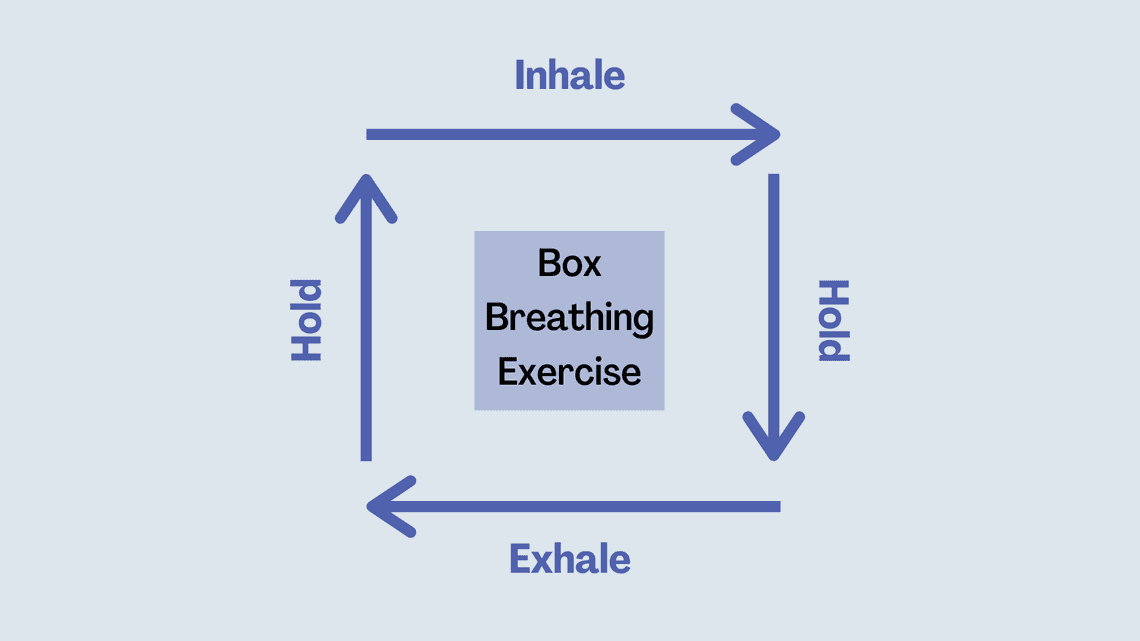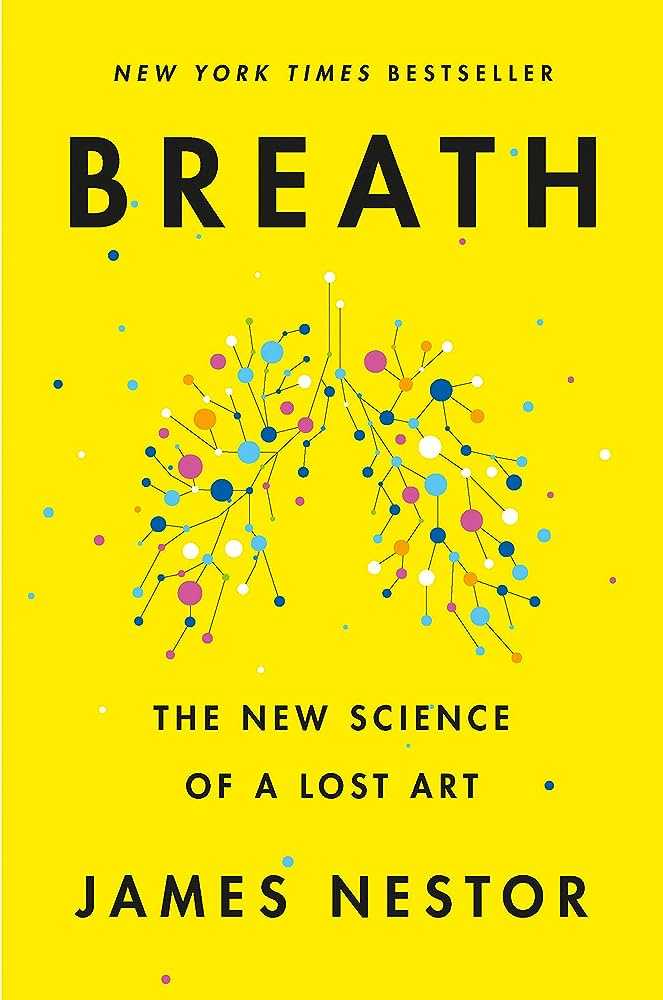Presence Wrapped in a Box Breath

“Being aware of your breath forces you into the present moment - the key to all inner transformation. Whenever you are conscious of the breath, you are absolutely present. You may also notice that you cannot think and be aware of your breathing. Conscious breathing stops your mind.” - Eckhart Tolle
Breathing is something we do without any conscious thought or awareness but it’s the most important factor for keeping us alive. Humans can survive weeks without food, days to weeks without water, but only minutes without oxygen.
For how important breathing is to life it’s funny how humans are the only animals on earth that breathe incorrectly. There are many physiological and psychological dysfunctions related to improper breathing.
I’ll describe a breathing technique that you can use to provide peace and relaxation during times of stress. It’s also a great tool to utilize when times are good and you just want to take care of your mind, body, and spirit.
According to a study performed in January of 2023, there was a significant difference in the positive benefits between mindfulness meditation and breathwork. They showed that breathwork provided greater benefits on feelings of overall well-being than mindfulness breathing.
The main difference between the two techniques is that mindfulness breathing is putting your attention and awareness on the breath. This could be focusing on the rise and fall of your chest, or the sensations your feeling as the air moves in and out of your body.
Breathwork on the other hand is an intentional practice that will change your breathing patterns entirely. Due to the level of focus required to sustain such a change for longer periods of time, you will naturally get the benefits of mindfulness as well.
This is not to say that mindfulness breathing is not effective or useful, because that’s far from true. Instead utilizing a breathing practice that creates a bigger difference in the rate, depth, and number of breaths taken per minute causes greater changes physically and mentally.
The How to
One of the things I love about breathing exercises is how easy they are to perform. The box breathing technique is one of the best when it comes to its simplicity and effectiveness.
Navy Seals rely on techniques such as this one to maintain a sense of calmness and clarity in times of stress. While our everyday lives may not ever compare to that of highly trained combat soldiers we can benefit just as much by using the same methods.
If it’s good enough for them it will most definitely work for you. Here is how it’s done.
Begin by setting a timer for your desired session length. Five minutes is a great place to start, as you become more practiced increase the duration.
Step 1: Breathe in through your nose for a count of 4. Feel the air fill your stomach and lungs.
Step 2: Once you’ve reached 4 seconds of your inhale, pause and hold. Do this for 4 seconds as well.
Step 3: After you’ve held your breath for 4 seconds slowly exhale out for your mouth for another 4 seconds.
Step 4: Now once you’ve reached the end of your 4 second exhale again you will pause and hold your breath for another 4 seconds. You’ve just completed one cycle.
Step 5: Repeat Steps 1-4 until your timer goes off.

- Photo Credit DaveMcCusker.com
If the four-second box breath is too much for you then start with two or three and work your way up. Experiment with different cycle lengths and see which feels the best for you, make it your own practice.
Physiological Responses
Slow deep breathing has a powerful effect on our heart, lungs, brain, and nervous system. Just by changing the rate and depth of our breathing, we can change our internal state from that of stress and tension to total relaxation within 5 minutes.
The arteries leaving the heart have pressure sensors that detect when there is a rise in blood pressure. During a slow and deep inhale the blood pressure drops which allows the heart to fill with blood, but during an exhale the opposite happens causing an increase in blood pressure.
As more pressure is exerted on the arteries by the blood leaving the heart a signal is sent to the brain reporting this increase above normal. To maintain balance in the system the heart rate will slow down just like it would after a short bout of exercise.
In this case, you’re using the breath to mimic the same signals that physical activity would without ever exerting yourself beyond contracting the muscles expanding your rib cage.
The result is an even greater relaxation response than you would get after a workout because your body was in a relaxed state to begin with. In short, we can use breathwork to trick our body into thinking it needs to calm down as it would after periods of physical activity.
Another mechanism by which slow deep breathing creates a more relaxed state is by decreasing the amount of carbon dioxide in the blood.
When we exercise our bodies are constantly breaking down sugar into usable energy, one of the byproducts of this reaction is carbon dioxide. As it builds up in our bloodstream receptors in the blood vessels alert the brain so that we can increase our breathing rate.
That is the primary means by which we can clear the blood of carbon dioxide and allow oxygen levels to increase. So if we are at rest and we begin to take longer breaths the carbon dioxide levels in the blood will become very low.
This will also bring our bodies from more of an acidic state to more alkaline. Low acidity in the blood improves the effectiveness of enzymes which play a key role in how our cells get their energy.
By knowing how our physiology is affected by breathing we can use that information to our advantage in times of stress. It’s also a great habit to add to a daily routine as a holistic lifestyle practice.
Psychological benefits
Breathing practices have been used for thousands of years for their benefits on the mind and the body. When referring to breathing practices in this instance I am referring to breath work rather than mindfulness exercises.
When performing a meditative mindfulness practice you are simply becoming aware of the breath and focusing your attention on the natural rhythms of the inhale and exhale. For this practice, we are intentionally changing our breathing rate to cause an internal change in both mind and body.
Some additional points to consider when performing breathing exercises are to be mindful of inhaling through the nose into the stomach and exhaling through the mouth. I even prefer leaving my mouth open to relax the jaw muscles which is a common site of stored tension much like the shoulders.
Inhaling through the nose will increase the activity of brain regions that are involved with emotional regulation and memory. This is why there is an increase in alertness and a decrease in anxiety that does not happen with mouth breathing.
In James Nestor’s book Breath The Science of A Lost Art, he highlights how mouth breathing can cause increases in blood pressure as well as structural changes in the mouth and face.
It has even been shown to decrease the intensity of pain. Since pain has been correlated with emotional states such as anxiety and depression, reducing these physiological states will provide physical relief without medications.
In some cases, antidepressant medications are used with patients with chronic pain for this reason. By just changing the way we breathe we can naturally tap into nature’s pharmacy, our brain.
When we consciously slow our breathing rate down we are using the body to send a signal to the brain that says everything in the outer environment is not threatening. It will create changes that have an immediate impact on our focus, stress levels, and outlook.
This is also true in the reverse, stress and anxiety will instinctively change how we breathe to prepare the body for activity in case we need to run or fight. Causing an increase in heart rate, breathing rate, and blood pressure.
By using this information to our advantage we can just as easily reverse this reaction and control our internal states regardless of what is happening in our lives.
Summary of main points
- Breathing rate and depth play affect our internal states and dictate whether we are calm and relaxed or stressed and anxious.
- Box breathing is a simple technique that will provide immediate changes in the mind and body.
- Inhale for 4 seconds, pause for 4 seconds, exhale for 4 seconds, and pause for 4 seconds. Repeat this cycle for 5 min
- Breathe work will reduce heart rate, breathing rate, blood pressure, and the build-up of carbon dioxide creating a sense of calmness.
- Using nasal breathing and filling up our stomach will cause greater reductions in stress, anxiety, and pain while increasing our alertness and memory.
Call to Action
Make a goal for how many times you plan on practicing breathwork in a week; two to four times is a good starting point. They don’t have to be long, five minutes is enough to notice a positive effect.
Pick the days and times you will fit your sessions in and schedule them like you would a workout or a doctor’s appointment.
I prefer practicing in the mornings and the evenings when there are no distractions, but I also use them as needed throughout the day if I’m becoming stressed or anxious. Do a mental and physical check-in before you practice and take note of any physical tension or mental stressors that are present.
After your session do another check-in and notice how much differently you feel after just five minutes of breathing. The more you practice gradually increase the duration or frequency per week.
Resources:
Balban MY, Neri E, Kogon MM, Weed L, Nouriani B, Jo B, Holl G, Zeitzer JM, Spiegel D, Huberman AD. Brief structured respiration practices enhance mood and reduce physiological arousal. Cell Rep Med. 2023 Jan 17;4(1):100895. doi: 10.1016/j.xcrm.2022.100895. Epub 2023 Jan 10. PMID: 36630953; PMCID: PMC9873947.
Russo MA, Santarelli DM, O’Rourke D. The physiological effects of slow breathing in the healthy human. Breathe (Sheff). 2017 Dec;13(4):298-309. doi: 10.1183/20734735.009817. PMID: 29209423; PMCID: PMC5709795.
Gholamrezaei A, Van Diest I, Aziz Q, Pauwels A, Tack J, Vlaeyen JWS, Van Oudenhove L. Effect of slow, deep breathing on visceral pain perception and its underlying psychophysiological mechanisms. Neurogastroenterol Motil. 2022 Apr;34(4):e14242. doi: 10.1111/nmo.14242. Epub 2021 Aug 11. PMID: 34378834.
Books:

Share
Related Posts
Quick Links
Legal Stuff
Social Media

